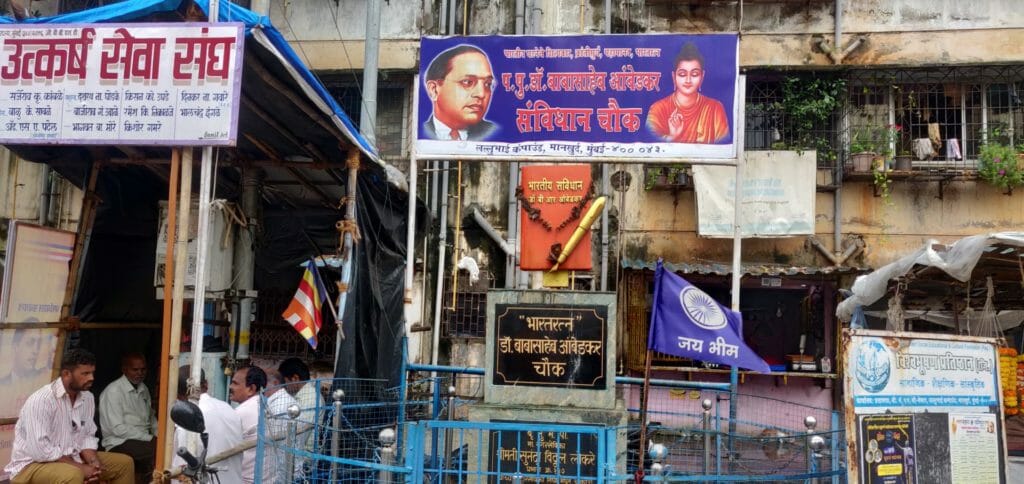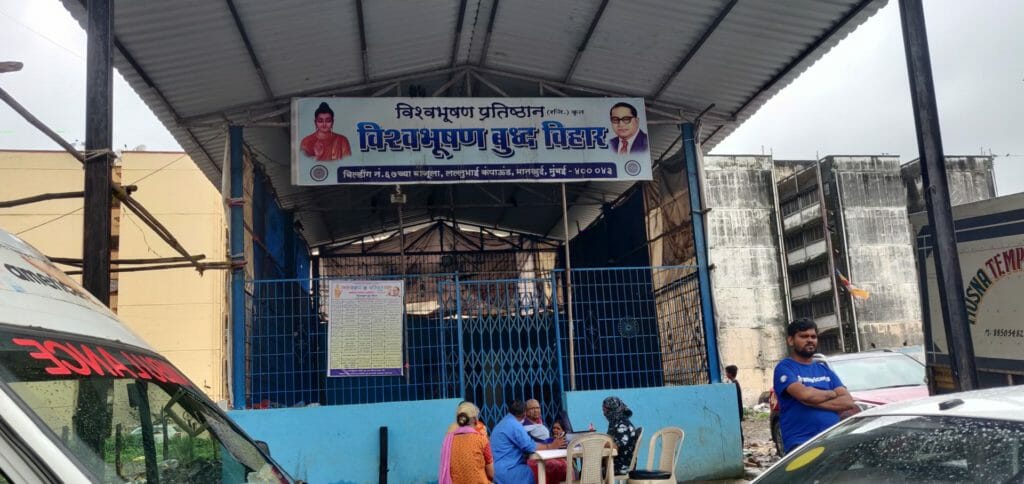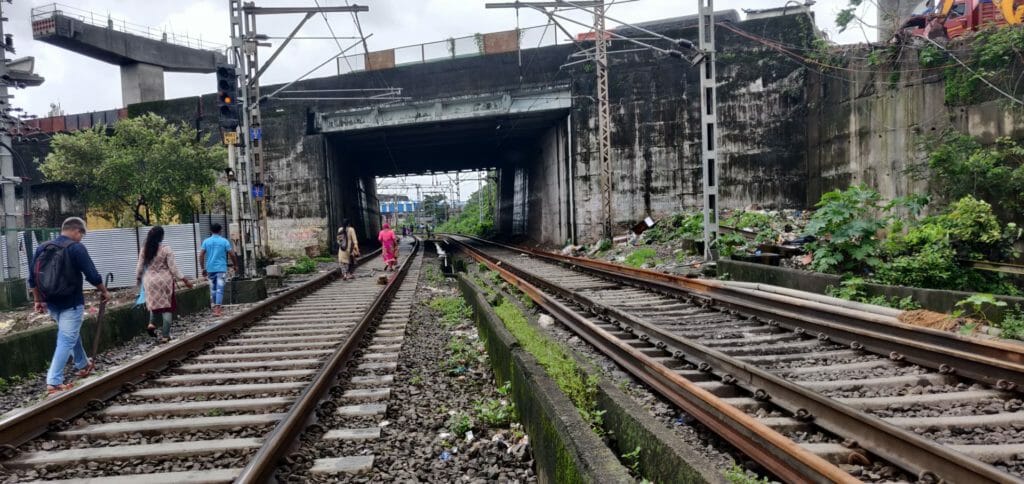Lallubhai Compound in Mumbai’s Mankhurd is one of those areas where nobody wants to live unless they are compelled by their circumstances. All the residents here were rehabilitated about two decades ago by the Slum Rehabilitation Authority (SRA) in buildings built with the sole purpose of providing a roof, everything else was left up to the people.
Up until 2009, the area lacked access to clean drinking water, there were no schools and no street lights; late evenings were a big no for women. While some sent their children to schools at Sion Trombay Road, which is about 4 km away from here, others were forced to let their children travel far-off distances to the schools they were in before moving to Lallubhai.
Around 50 to 60 per cent of children drop out of school after their families are evicted and rehabilitated to a new area, according to a survey conducted by Youth for Unity and Voluntary Action (YUVA), a non-profit developmental organisation. Once upon a time, children of Lallubhai Compound could see themselves in these numbers. Urgent intervention was the need of the hour. That is when YUVA came into the picture in 2009.
‘Educate, agitate, organise’
This clarion call of Dr BR Ambedkar best describes what happened next. In the early 2000s, the NGO was helping daily wage labourers fight for their rights. In 2003, during a public meeting with the workers and their families, some children of Lallubhai Compound were vocal about the problems they face in the area. It was then that Bal Aadhikar Sangharsh Sanghatan (BSS), a children’s collective fighting for their rights, came into being, and I became a part of it in 2015 when my family was rehabilitated here from P D’mello road.
Little by little BSS brought about some significant changes, and after years of struggle, Lallubhai Compound saw its first school in 2009. All such changes are crucial for the community, it shows how child rights and child safety translates into better access to resources for all.

Highlighting what people need
YUVA now conducts walks in Lallubhai Compound, which are open for all, to highlight what people need when they are rehabilitated. This is done by showcasing the achievements of BSS over the years. Largely, the participants include students of architecture, urban researchers, NGOs, and media personnel. But I hope that with time more people from diverse backgrounds join these walks.
An open invitation for the walk is published on YUVA’s social media profiles and a nominal registration fee of Rs 200 is charged from the participants. The fee includes snacks for the participants and informative brochures provided to them during the walk. However, it is waived off in case an individual cannot afford it but would like to participate.

The five-stop walk is led by YUVA members and those who have been part of BSS in the last five years, most of whom, including me, are now in their early 20s. While the walk is currently on hold due to rains, it begins by showcasing Buddha Vihar, a place built by community members for cultural activities. This is where I brief the participants about some of the problems faced by the community members, and how over the years they make an unfamiliar place their own by establishing shared open spaces.

On the road opposite Buddha Vihar is a school run by the local corporation, the second stop of the walk, where I address the issues of women’s safety. Young girls in the area were uncomfortable while going to school, they were scared to even be out of their house alone as the roads were populated with men who would sexually harass them.
BSS had met with local police to resolve the problem but to no avail. The police acted on our issues only when we reached out to the Chief Minister’s office. It was then that they assured better surveillance and rounds in the area, however, for a while it was all on paper. Police officials would register their presence in the station notebooks but would rarely visit the area for patrolling.
We had to fight for better implementation, and after a lengthy dialogue with the local officials, they decided to make the attendance process digital. There was a barcode stuck at several places, like the school’s inner wall near the main gate, and the officials were required to scan it to register their presence.
Read more: Voices of the women of slum resettlement in Mumbai
The problem of transport and livelihood
It is a traumatic process when people are forced to see their homes get demolished. Many slum dwellers find work close to their area, however, when they are evicted and rehabilitated elsewhere, they lose their livelihood and a sense of security. These factors are not taken into consideration when the government decides to uproot people.
Lallubhai Compound was completely cut off at one point, one had to walk several kilometres to avail of public transport. Those who had lost their jobs after rehabilitation decided to combine the issue of transport and livelihood and became rickshaw drivers. Now shared autos ply between Govandi Station and Mankhurd for Rs 10 per trip. Some found work as domestic help and many became vegetable vendors, putting up makeshift shops on the main road.
Several children in this area are still enrolled in a school that is about a kilometre away from here. The school can be accessed by walking on railway tracks nearby, this was the preferred option instead of spending on a rickshaw every day. There were no parents accompanying them as taking time off work is not a luxury daily wage workers can afford, and this led to several unfortunate deaths over the years. I take the participants of the walk to this area and show them the challenges the community members faced while walking on these railway tracks.

It was only after BSS pleaded with the Member of Parliament Rahul Shewale several times that, a little before the last elections, there was a bridge constructed here for residents to cross the road safely. While there are fewer children seen crossing the railway tracks now, there are many working people who continue to do so to reach their workplace. We continue to speak out against it through our street play, Lallubhai tu patri ko cross mat kar.

Rehabilitation does not end with a roof
Today I am 23 and I feel indebted to YUVA. I do not know what would have happened to me and many like me if it wasn’t for this organisation. I know how to fight for my rights now and I aspire to be a lawyer. I want to represent all these women, children, and families who are deprived of their rights because of the inability of the state to protect them.
None of the initiatives by BSS happened overnight, these were gradual changes that occurred as people continued to suffer for years. Feeling abandoned by the state, they took it upon themselves to find solutions to their misery. However, it is the responsibility of public representatives and the state machinery to ensure that the families they are evicting have access to basic resources. Rehabilitation does not end with building a structure and making someone live there. People are made to undergo serious hardships in the name of development, this needs to stop.